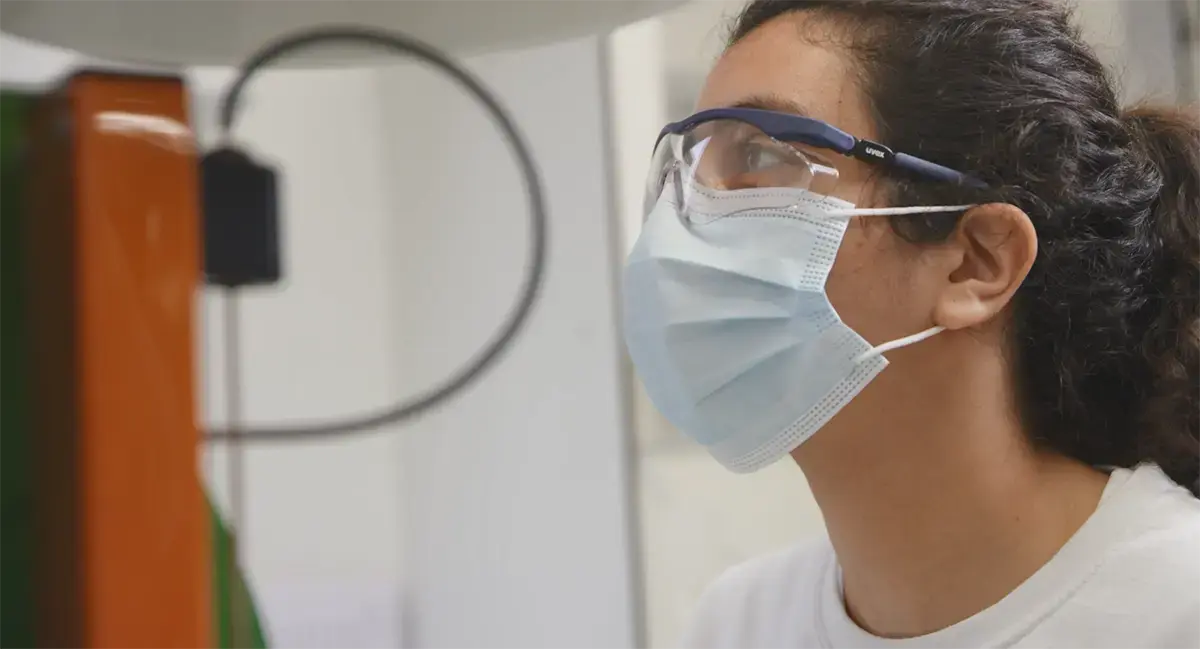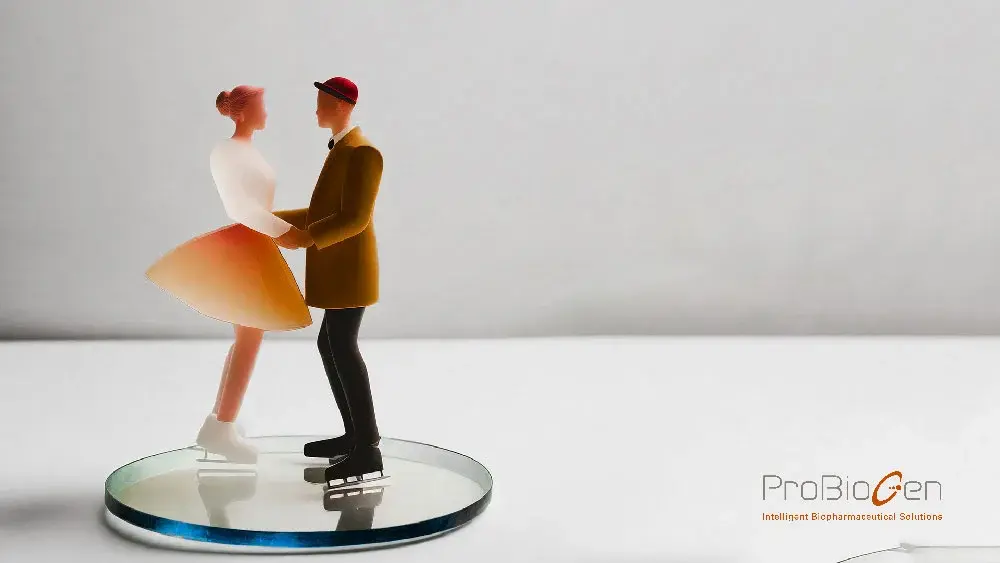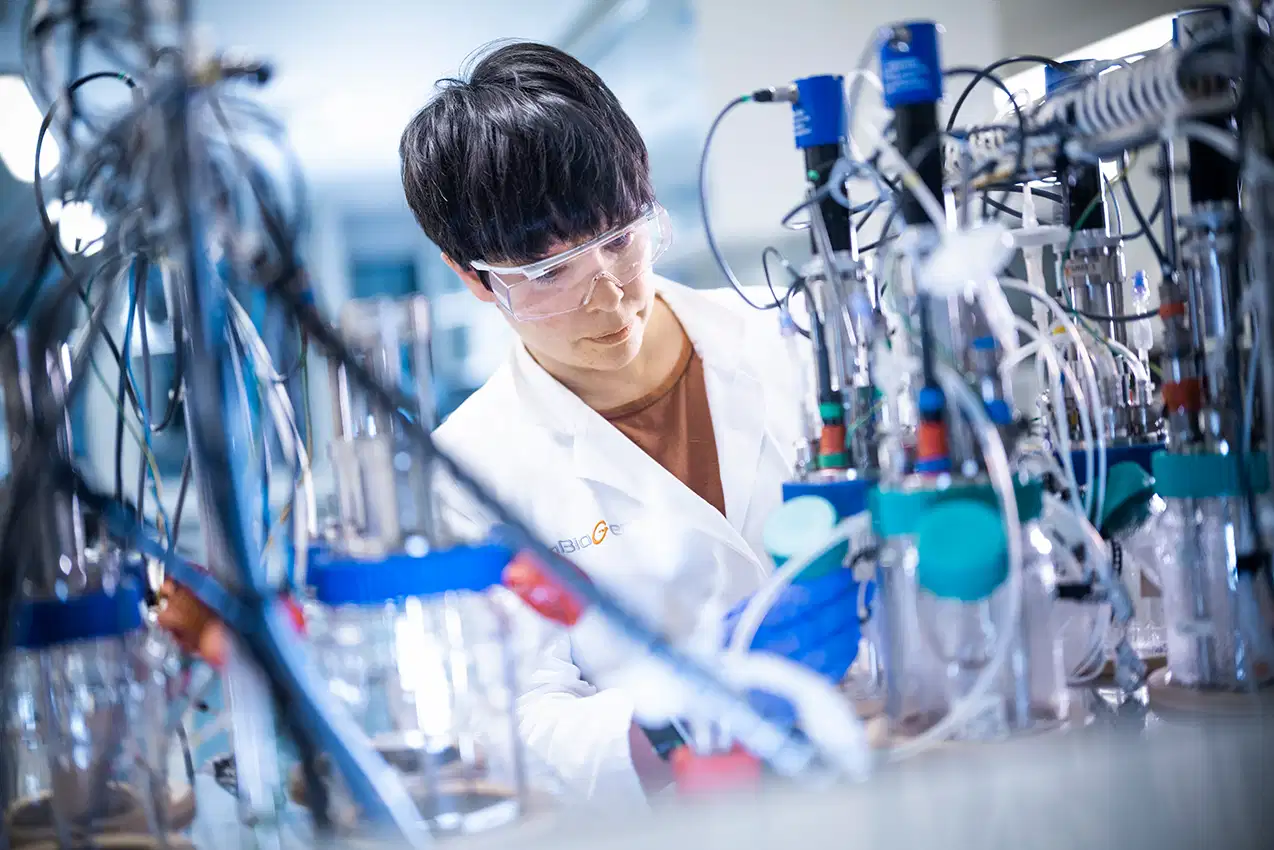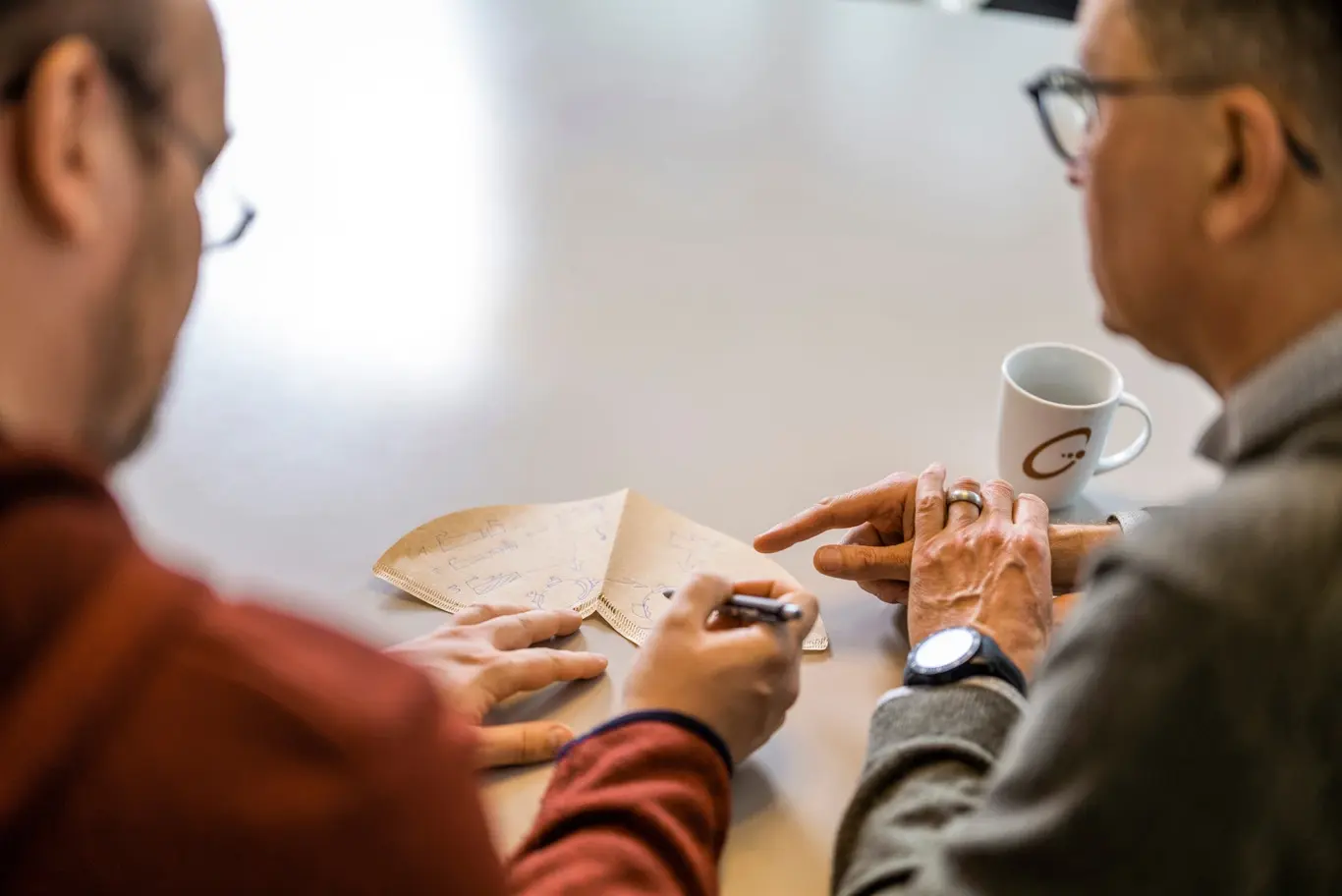Selected Publications
Our team is dedicated to advancing knowledge and driving innovation through impactful contributions to the scientific and professional community. Here, you’ll find a curated selection of our published articles, white papers, and studies. Each publication reflects our commitment to excellence, collaboration, and evidence-based practices.
Browse by Topic
Quantification of intracellular influenza A virus protein dynamics in different host cells after seed virus adaptation.
Parallel Multifactorial Process Optimization and Intensification for High-Yield Production of Live YF17D-Vectored Zika Vaccine.
Göbel S, Kazemi O, Ma J, Jordan I, Sandig V, Paulissen J, Kerstens W, Thibaut HJ, Reichl U, Dallmeier K, Genzel Y. Vaccines (Basel). 2024; 12(7):755. doi: 10.3390/vaccines12070755. PMID: 39066393
Development of an efficient veterinary rabies vaccine production process in the avian suspension cell line AGE1.CR.pIX.
Trabelsi K, Zakour MB, Jordan I, Sandig V, Rourou S, Kallel H. BMC Biotechnol. 2022; 22(1):17. doi: 10.1186/s12896-022-00747-5. PMID: 35715843
Influenza A virus production in a single-use orbital shaken bioreactor with ATF or TFF perfusion systems.
Coronel J, Behrendt I, Bürgin T, Anderlei T, Sandig V, Reichl U, Genzel Y. Vaccine. 2019; 37(47):7011-7018. doi: 10.1016/j.vaccine.2019.06.005. PMID: 31266669
Efficient and stable production of Modified Vaccinia Ankara virus in two-stage semi-continuous and in continuous stirred tank cultivation systems.
Tapia F, Jordan I, Genzel Y, Reichl U. PLoS One. 2017; 12(8):e0182553. doi: 10.1371/journal.pone.0182553. PMID: 2883757Continuous cell lines from the Muscovy duck as potential replacement for primary cells in the production of avian vaccines.
Impaired antiviral response of adenovirus-transformed cell lines supports virus replication.
Bachmann M, Breitwieser T, Lipps C, Wirth D, Jordan I, Reichl U, Frensing T. J Gen Virol. 2016; 97(2):293-298. doi: 10.1099/jgv.0.000361. PMID: 26647282.Purification of modified vaccinia virus Ankara from suspension cell culture.
Jordan I, Weimer D, Iarusso S, Bernhardt H, Lohr V, Sandig V. BMC Proceedings. 2015; https://doi.org/10.1186/1753-6561-9-S9-O13Boosting Upstream, Downstream Processing: To Expedite Biomanufacturing, Deploy a New Genotype of Modified Vaccinia Virus Ankara.
Lohr V, Sandig V, Jordan I. GEN Genetic Engineering & Biotechnology News, 2014 Jul 1 (Vol. 34, No. 13). ReadPropagation of viruses infecting waterfowl on continuous cell lines of Muscovy duck (Cairina moschata) origin.
Matrix and backstage: cellular substrates for viral vaccines.
High cell density cultivations by alternating tangential flow (ATF) perfusion for influenza A virus production using suspension cells.
Elements in the Development of a Production Process for Modified Vaccinia Virus Ankara.
Continuous influenza virus production in cell culture shows a periodic accumulation of defective interfering particles.
Frensing T, Heldt FS, Pflugmacher A, Behrendt I, Jordan I, Flockerzi D, Genzel Y, Reichl U. PLoS One. 2013; 8(9):e72288. doi: 10.1371/journal.pone.0072288. PMID: 24039749A novel genotype of MVA that efficiently replicates in single cell suspensions.
Jordan I, Sandig V. BMC Proceedings. 2013; 7(Suppl 6):O1. doi:10.1186/1753-6561-7-S6-O1.A genotype of modified vaccinia Ankara (MVA) that facilitates replication in suspension cultures in chemically defined medium.
Jordan I, Horn D, John K, Sandig V. Viruses. 2013; 5(1):321-39. doi: 10.3390/v5010321. PMID: 23337383Live attenuated influenza viruses produced in a suspension process with avian AGE1.CR.pIX cells.
Lohr V, Genzel Y, Jordan I, Katinger D, Mahr S, Sandig V, Reichl U. BMC Biotechnol. 2012; 12:79. doi: 10.1186/1472-6750-12-79. PMID: 23110398Production of a Viral-Vectored Vaccine Candidate Against Tuberculosis.
Jordan I, Woods N, Whale G, Sandig V.BioProcess International. 2012; 10(8):46-56. Request PDF
A chemically defined production process for highly attenuated poxviruses.
New avian suspension cell lines provide production of influenza virus and MVA in serum-free media: studies on growth, metabolism and virus propagation.
An avian cell line designed for production of highly attenuated viruses.
An Avian Designer Cell Line for Vaccine Manufacture.
Jordan, I, Vos, A, Neubert, A, Sandig, VBioWorld Europe. 03–2007
CD26/DPP4 cell-surface expression in bat cells correlates with bat cell susceptibility to Middle East respiratory syndrome coronavirus (MERS-CoV) infection and evolution of persistent infection.
Influenza A Virus Polymerase Is a Site for Adaptive Changes During Experimental Evolution in Bat Cells.
Establishment of fruit bat cells (Rousettus aegyptiacus) as a model system for the investigation of filoviral infection.
Cell lines from the Egyptian fruit bat are permissive for modified vaccinia Ankara.
The influence of cell growth and enzyme activity changes on intracellular metabolite dynamics in AGE1.HN.AAT cells.
N-glycosylation and biological activity of recombinant human alpha1-antitrypsin expressed in a novel human neuronal cell line.
Quercetin treatment changes fluxes in the primary metabolism and increases culture longevity and recombinant α1-antitrypsin production in human AGE1.HN cells.
Quantitative characterization of metabolism and metabolic shifts during growth of the new human cell line AGE1.HN using time resolved metabolic flux analysis
Mucoadhesive film for oral delivery of vaccines for protection of the respiratory tract.
Esih H, Mezgec K, Billmeier M, Malenšek Š, Benčina M, Grilc B, Vidmar S, Gašperlin M, Bele M, Zidarn M, Zupanc TL, Morgan T, Jordan I, Sandig V, Schrödel S, Thirion C, Protzer U, Wagner R, Lainšček D, Jerala R. J Control Release. 2024 Jul;371:179-192. doi: 10.1016/j.jconrel.2024.05.041. PMID: 38795814.
A rapid, high-throughput, viral infectivity assay using automated brightfield microscopy with machine learning.
Seamless Coupling of Chemical Glycan Release and Labeling for an Accelerated Protein N-Glycan Sample Preparation Workflow.
Kasim M, Griebel A, Sandig G, Höltzel R, Malhotra A, Hinderlich S, Sandig V, Müller B, von Horsten HH. Bioengineering (Basel). 2023 May 26;10(6):651. doi: 10.3390/bioengineering10060651. PMID: 37370584
Comparison of middle- and bottom-up mass spectrometry in forced degradation studies of bevacizumab and infliximab.
Dyck YFK, Rehm D, Winkler K, Sandig V, Jabs W, Parr MK. J Pharm Biomed Anal. 2023 Oct 25;235:115596. doi: 10.1016/j.jpba.2023.115596. PMID: 37540995
Forced Degradation Testing as Complementary Tool for Biosimilarity Assessment.
Dyck YFK, Rehm D, Joseph JF, Winkler K, Sandig V, Jabs W, Parr MK. Bioengineering (Basel). 2019 Jul 21;6(3):62. doi: 10.3390/bioengineering6030062. PMID: 31330921
Characterization of Recombinant Proteins (Chapter 9.).
C. Giese, H. von Horsten and S. Zietze:in Kayser and Warzecha (Eds.) (2012): Pharmaceutical Biotechnology: Drug Discovery and Clinical Applications. DOI: 10.1002/9783527632909.ch9
Quantitative MALDI-TOF-MS Using Stable-isotope Labeling: Application to the Analysis of N-glycans of Recombinant α-1 Antitrypsin Produced Using Different Culture Parameters.
Blanchard V, Kaup M , Eigel S, Rieck S, Sandig V, Marx U, Tauber R, Berger M,Journal of Carbohydrate Chemistry, 2011; 30:320–333, DOI: 10.1080/07328303.2011.605194
Quality for Biologics.
Zietze S, Riedel M,Biopharm Knowledge Publishing. 2008.
Standardization, evaluation and early-phase method validation of an analytical scheme for batch-consistency N-glycosylation analysis of recombinant produced glycoproteins.
Drug Testing In Vitro – Breakthroughs and Trends in Cell Culture Technology.
Marx U & Sandig V (eds.).Wiley-VCH Verlag GmbH & Co. KgaA. 2007; DOI:10.1002/9783527609611
Production of non-fucosylated antibodies by co-expression of heterologous GDP-6-deoxy-D-lyxo-4-hexulose reductase.
von Horsten HH, Ogorek C, Blanchard V, Demmler C, Giese C, Winkler K, Kaup M, Berger M, Jordan I, Sandig V., Glycobiology. 2010 Dec;20(12):1607-18. doi: 10.1093/glycob/cwq109. PMID: 20639190
Novel Bioreactors for Fragile Glycoproteins.
Langhammer S, Brecht R, Marx U,GEN. 2007, January (Vol. 27, No. 1) 1: 34–35;
Pharmaceutical Cell Lines for Biologics Production: Manipulation of cell growth, metabolism and product quality attributes
Von Horsten H, Winkler K, Sandig V2014, Pages: 216-246, DOI (Chapter): https://doi.org/10.1515/9783110278965.216
A computationally designed antigen eliciting broad humoral responses against SARS-CoV-2 and related sarbecoviruses.
Computationally designed Spike antigens induce neutralising responses against the breadth of SARS-COV-2 variants.
An Orally Administered Nonpathogenic Attenuated Vaccine Virus Can Be Used to Control SARS-CoV-2 Infection: A Complementary Plan B to COVID-19 Vaccination.
A Clinically Validated, Broadly Active, Oral Viral Superinfection Therapy Could Mitigate Symptoms in Early-stage COVID-19 Patients.
Abrogation of Marek's disease virus replication using CRISPR/Cas9.
Hagag IT, Wight DJ, Bartsch D, Sid H, Jordan I, Bertzbach LD, Schusser B, Kaufer BB., Sci Rep. 2020 Jul 2;10(1):10919. doi: 10.1038/s41598-020-67951-1. PMID: 32616820; PMCID: PMC7331644.
Development and Assessment of Human Adenovirus Type 11 as a Gene Transfer Vector.
Genome Size and Structure Determine Efficiency of Postinternalizytion Steps and Gene Transfer of Capsid-Modified Adenovirus Vectors in a Cell-Type-Specific Manner.
The complete nucleotide sequence, genome organization, and orign of human adenovirus type11.
Glycan masking of a non-neutralising epitope enhances neutralising antibodies targeting the RBD of SARS-CoV-2 and its variants.
Seamless Coupling of Chemical Glycan Release and Labeling for an Accelerated Protein N-Glycan Sample Preparation Workflow
Multi-level glyco-engineering techniques to generate IgG with defined Fc-glycans
Dekkers G, Plomp R, Koeleman CA, Visser R, von Horsten HH, Sandig V, Rispens T, Wuhrer M, Vidarsson G., Sci Rep. 2016 Nov 22;6:36964. doi: 10.1038/srep36964. PMID: 27872474
Applying Acylated Fucose Analogues to Metabolic Glycoengineering
Rosenlöcher J, Böhrsch V, Sacharjat M, Blanchard V, Giese C, Sandig V, Hackenberger CPR, Hinderlich S., Bioengineering (Basel). 2015 Nov 30;2(4):213-234. doi: 10.3390/bioengineering2040213. PMID: 28952479
A novel bicistronic gene design couples stable cell line selection with a fucose switch in a designer CHO host to produce native and afucosylated glycoform antibodies.
Engineering of CHO Cells for the Production of Recombinant Glycoprotein Vaccines with Xylosylated N-glycans.
Fucose-targeted glycoengineering of pharmaceutical cell lines.
Production of non-fucosylated antibodies by co-expression of heterologous GDP-6-deoxy-D-lyxo-4-hexulose reductase.
In Vitro Evaluation of Glycoengineered RSV-F in the Human Artificial Lymph Node Reactor.
State-of-the-Art and New Optionsto Assess T Cell Activation by Skin Sensitizers: Cosmetics Europe Workshop
Towards a 21st-century roadmap for biomedical research and drug discovery: consensus report and recommendations.
Biology-inspired microphysiological system approaches to solve the prediction dilemma of substance testing.
Modeling Human Immunity In Vitro: Improving Artificial Lymph Node Physiology by Stromal Cells.
Sardi M, Lubitz A, Giese C. Applied In Vitro Toxicology. 2016; 2(3): 143-150. doi:10.1089/aivt.2016.0004.Human immunity in vitro - Solving immunogenicity and more.
Crosstalk between immune cells and mesenchymal stromal cells in a 3D bioreactor system.
Engineering tissue alternatives to animals: applying tissue engineering to basic research and safety testing.
Immunological substance testing on human lymphatic micro-organoids in vitro.
A Human Lymph Node In Vitro – Challenges and Progress
Increasing antibody yield and modulating final product quality using the FreedomTM CHO-STM production platform.
Process intensification strategies toward cell culture-based high-yield production of a fusogenic oncolytic virus.
Göbel S, Jaén KE, Dorn M, Neumeyer V, Jordan I, Sandig V, Reichl U, Altomonte J, Genzel Y., Biotechnol Bioeng. 2023 Sep;120(9):2639-2657. doi: 10.1002/bit.28353. PMID: 36779302.
Production of Modified Vaccinia Ankara Virus by Intensified Cell Cultures: A Comparison of Platform Technologies for Viral Vector Production.
A high cell density perfusion process for Modified Vaccinia virus Ankara production: Process integration with inline DNA digestion and cost analysis.
Performance of an acoustic settler versus a hollow fiber-based ATF technology for influenza virus production in perfusion.
Application of an Inclined Settler for Cell Culture-Based Influenza A Virus Production in Perfusion Mode.
Coronel J, Gränicher G, Sandig V, Noll T, Genzel Y, Reichl U. Front Bioeng Biotechnol. 2020 Jul 2;8:672. doi: 10.3389/fbioe.2020.00672. PMID: 32714908
Continuous influenza virus production in a tubular bioreactor system provides stable titers and avoids the "von Magnus effect".
Tapia F, Wohlfarth D, Sandig V, Jordan I, Genzel Y, Reichl U., PLoS One. 2019 Nov 5;14(11):e0224317. doi: 10.1371/journal.pone.0224317. PMID: 31689309
A chiropteran factor of innate immunity can be recruited for rapid rescue and amplification of recombinant modified vaccinia Ankara (MVA)
Elhazaz Fernandez A., Abidi S., Mähl K., Scheffler D, Sandig V, Jordan I.; (Virology 20),25 Nov., 110698,
https://doi.org/10.10.16/j.virol.2025.110698.
Expression of an Efficient Selection Marker Out of a Duplicated Site in the ITRs of a Modified Vaccinia Virus Ankara (MVA)
Abidi S, Elhazaz Fernandez A, Seehase N, Hanisch L, Karlas A, Sandig V, Jordan I., Vaccines (Basel). 2024 Dec 6;12(12):1377. doi: 10.3390/vaccines12121377. PMID: 39772039
A Deleted Deletion Site in a New Vector Strain and Exceptional Genomic Stability of Plaque-Purified Modified Vaccinia Ankara (MVA)
Jordan I, Horn D, Thiele K, Haag L, Fiddeke K, Sandig V., Virologica Sinica, 2020 Apr;35(2):212-226. doi: 10.1007/s12250-019-00176-3. Epub 2019 Dec 12. PMID: 31833037
High titer MVA and influenza A virus production using a hybrid fed-batch/perfusion strategy with an ATF system
Vázquez-Ramírez D, Jordan I, Sandig V, Genzel Y, Reichl U., Appl Microbiol Biotechnol. 2019 Apr;103(7):3025-3035. doi: 10.1007/s00253-019-09694-2. PMID: 30796494
High-cell-density cultivations to increase MVA virus production
Vázquez-Ramírez D, Genzel Y, Jordan I, Sandig V, Reichl U., Vaccine. 2018 May 24;36(22):3124-3133. doi: 10.1016/j.vaccine.2017.10.112. Epub 2018 Feb 9. PMID: 29433897
Cell-line screening and process development for a fusogenic oncolytic virus in small-scale suspension cultures.
A Novel Chimeric Oncolytic Virus Vector for Improved Safety and Efficacy as a Platform for the Treatment of Hepatocellular Carcinoma.
Transgene expression knock-down in recombinant Modified Vaccinia virus Ankara vectors improves genetic stability and sustained transgene maintenance across multiple passages.
Combination Therapy for the Treatment of Shingles with an Immunostimulatory Vaccine Virus and Acyclovir.
A dynamic model linking cell growth to intracellular metabolism and extracellular by-product accumulation.
Efficient influenza A virus production in high cell density using the novel porcine suspension cell line PBG.PK2.1.
Detection of Two Highly Diverse Peribunyaviruses in Mosquitoes from Palenque, Mexico.
Must Reads
Over the years, our scientists have published numerous important papers. Here, we've highlighted a selection that we believe is of particular interest.
Modified Vaccinia Virus Ankara (MVA):
Expression of an Efficient Selection Marker Out of a Duplicated Site in the ITRs of a Modified Vaccinia Virus Ankara (MVA)
Abidi S, Elhazaz Fernandez A, Seehase N, Hanisch L, Karlas A, Sandig V, Jordan I., Vaccines (Basel), 2024, Vol. 12(12):1377
A Deleted Deletion Site in a New Vector Strain and Exceptional Genomic Stability of Plaque-Purified Modified Vaccinia Ankara (MVA)
Jordan I, Horn D, Thiele K, Haag L, Fiddeke K, Sandig V., Virologica Sinica, 2020, Vol. 35(2), pp. 212–226
Analytical Development:
Forced Degradation Testing as Complementary Tool for Biosimilarity Assessment
Dyck YFK, Rehm D, Joseph JF, Winkler K, Sandig V, Jabs W, Parr MK., Bioengineering (Basel), 2019, Vol. 6(3):62
AGE1.CR:
Continuous cell lines from the Muscovy duck as potential replacement for primary cells in the production of avian vaccines
Jordan I, John K, Höwing K, Lohr V, Penzes Z, Gubucz-Sombor E, Fu Y, Gao P, Harder T, Zádori Z, Sandig V., Avian Pathology, 2016, Vol. 45(2), pp. 137–155
Precision Glycoengineering:
Production of non-fucosylated antibodies by co-expression of heterologous GDP-6-deoxy-D-lyxo-4-hexulose reductase
von Horsten HH, Ogorek C, Blanchard V, Demmler C, Giese C, Winkler K, Kaup M, Berger M, Jordan I, Sandig V., Glycobiology, 2010, Vol. 20(12), pp. 1607–1618
ProBioGen News
Join our news and always be up-to-date.




